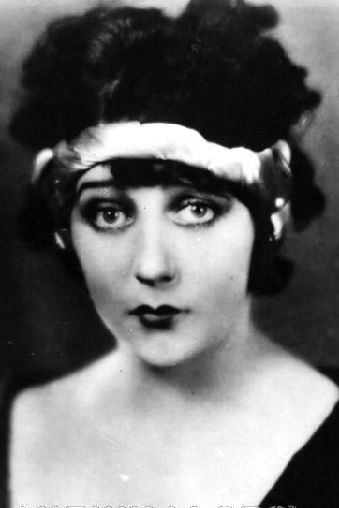Anna Ruby Gordy Gaye (January 28, 1922[1] – January 31, 2014) was an American businesswoman, composer and songwriter. An elder sister of Motown founder Berry Gordy, she became a record executive in the mid-to-late 1950s distributing records released on Checker and Gone Records before forming the Anna label with Billy Davis and sister Gwen. Gordy later became known as a songwriter for several hits including the Originals' "Baby, I'm for Real," and at least two songs on Marvin Gaye's "What's Going On" album. The first wife of Gaye, their turbulent marriage later served as inspiration for Gaye's album, "Here, My Dear."[3]
Biography
Life and career
Born Anna Ruby Gordy on January 28, 1922,[1] in Oconee, Georgia, she was the third eldest of Berry Gordy Sr. (Berry Gordy II) and Bertha Ida (née Fuller) Gordy's eight children. Into her first year, Gordy's family relocated to Detroit. Following graduation from high school in 1940, Gordy relocated to California, which is where Gordy's younger brother Berry moved to after he dropped out of high school to form a boxing career. Returning to Detroit in the mid-1950s, she and younger sister Gwen became operators of the photo concession at Detroit's Flame Show Bar.
By the late 1950s, members of the Gordy family were getting involved with the music business. In 1956, Anna began her career distributing records with Checker Records. Around 1957, she distributed a couple recordings for Gone Records. In 1958, she founded the label, Anna Records, with musician Billy Davis. Gordy's younger sister Gwen acted as co-partner with the label. The label was formed a year before Berry launched Tamla Records, later a subsidiary for Motown. Anna distributed Tamla's first national hit, Barrett Strong's "Money (That's What I Want)." Artists such as David Ruffin and Joe Tex also recorded for the label while Marvin Gaye became a session musician with the company. After the label was absorbed by Motown in 1961, Gordy joined Motown as a songwriter. Some of Gordy's early compositions were recorded by Gaye and Mary Wells. In 1965, Gordy co-wrote Stevie Wonder's "What Christmas Means to Me." Gordy later co-composed the Originals' hits, "Baby, I'm for Real" and "The Bells" alongside Marvin Gaye. Gordy's name was included as a co-songwriter on two songs off Gaye's 1971 album, "What's Going On," including "Flyin' High (In the Friendly Sky)" and "God Is Love." In 1973, Gordy's name was included in the credits to the song, "Just to Keep You Satisfied," which was first recorded in 1969 by the Monitors and also recorded by the Originals two years later. Gaye's version was actually overdubbed from the Originals recording and reversed the song's romantic lyrics for a more solemn view of the end of a marriage. Gordy eventually left Motown at the end of the 1970s and retired from the music industry.
.jpg)
Personal life
Gordy first met Marvin Gaye in 1959 when Gaye was just 20 years old, singing with Harvey and the New Moonglows. Gaye soon began working at Anna Records and soon developed an attraction to Gordy. They eventually began dating in 1960. After a three-year courtship, they married in June 1963.
Inspired by their romance, Marvin penned hit singles based off Anna including "Stubborn Kind of Fellow," "Pride and Joy," and "You're a Wonderful One." Of "Pride and Joy," Gaye said, "When I composed 'Pride and Joy,' I was head over heels in love with Anna. I just wrote what I felt about her, and what she did for me. She was my pride and joy."[4]
The marriage between Marvin and Anna was reportedly turbulent, leading to public spats. In order to bring some stability to their home life, Anna and Marvin adopted a little boy who was born on November 17, 1966. The boy was soon named after his adopted father (Marvin Pentz Gaye III). While the boy was said to have been naturally conceived by Anna and Marvin during Motown's public relations stories of the couple, Marvin himself would confirm the adoption in David Ritz's Marvin biography, "Divided Soul: The Life of Marvin Gaye."[5] In later years, the identity of the mother was revealed as Denise Gordy.
In 1971, the couple moved to Hollywood. Two years later, the couple filed for legal separation with Gaye settling in with a young woman named Janis Hunter, with whom Gaye would have two children. In November 1975, Gordy filed for divorce. After nearly two years, the case was settled in Gordy's favor after Gaye agreed to remit a portion of his royalties off his next album to Gordy.[6] The resulting album, "Here, My Dear," gave audiences a view of the marriage through Marvin's point of view. Released in December 1978, Gordy heard the album and threatened to sue Marvin for $5 million for invasion of privacy.[7] Nothing came of this threat.[6]
In the 1980s, Marvin and Anna reconciled as friends and Anna was on hand with Marvin at industry events following the release of his comeback album, "Midnight Love," in 1982. Anna also attended the Grammy Awards in 1983, where Marvin won two trophies. Marvin's death in 1984 devastated Anna; later she and Marvin's three children scattered most of his ashes near the Pacific Ocean while Anna kept a portion. When Marvin was honored with induction into the Rock and Roll Hall of Fame, Anna and Marvin Gaye III accepted on his behalf.
Gordy never remarried following her divorce. Her last public appearance came in June 2008 when she attended the Cedars-Sinai Medical Center Heart Foundation event where brother Berry was being honored.
Death
Gordy died on January 31, 2014, at the age of 92, following many years of declining health.[8] She is buried at Forest Lawn Memorial Park – Hollywood Hills, Courts of Remembrance, Sanctuary of Enduring Protection, Private Family Room.[2]
References
1. "Berry Gordy's Statement on the Passing of His Sister Anna Gordy Gaye." Eurweb.com.
2. "Anna Ruby Gordy Gaye (1921–2014)." Find-a-Grave.
3. Ritz, David (7 May 2003). Divided Soul: The Life of Marvin Gaye. Basic Books. p. x. ISBN 978-0-306-81191-3.
4. Ritz 1991, p. 82.
5. Ritz 1991, pp. 100–101.
6. "snopes.com: Marvin Gaye Here, My Dear."
7. "In L.A.'s Other Marvin Case, It's Gaye Vs. Anna Gordy, With Brother Berry in the Middle." People.com. April 9, 1979.
8. "Marvin Gaye's Ex-Wife Anna Gordy Gaye Dead at 92." TMZ. January 31, 2014.
Sidney Sheldon (February 11, 1917 – January 30, 2007) was an American writer. His TV works spanned a 20-year period during which he created The Patty Duke Show (1963-66), I Dream of Jeannie (1965-70) and Hart to Hart (1979–84), but it was not until after he turned 50 and began writing best-selling novels such as Master of the Game (1982), The Other Side of Midnight (1973) and Rage of Angels (1980) that he became most famous.
Life and career
Sheldon was born Sidney Schechtel in Chicago, Illinois, to parents of Russian Jewish ancestry, Ascher "Otto" Schechtel (1894-1967), manager of a jewelry store, and Natalie Marcus. At 10, he made his first sale, $5 for a poem.[1] During the Depression, he worked at a variety of jobs, attended Northwestern University and contributed short plays to drama groups.[1]
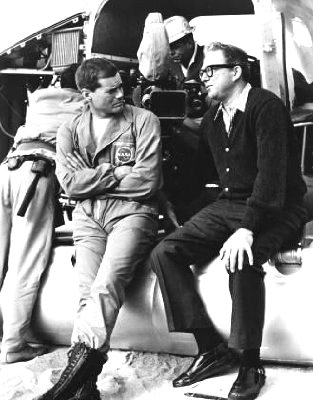
In 1937 he moved to Hollywood, California, where he reviewed scripts and collaborated on a number of B movies.[2] Sheldon enlisted in the military during World War II as a pilot in the War Training Service, a branch of the Army Air Corps,[2] However, his unit was disbanded before Sheldon could see any action. He then returned to civilian life and moved to New York where he began writing musicals for the Broadway stage while continuing to write screenplays for both MGM Studios and Paramount Pictures. He earned a reputation as a prolific writer; for example, at one time he had three musicals on Broadway: a rewritten The Merry Widow, Jackpot, and Dream with Music.[1] His success on Broadway brought him back to Hollywood where his first assignment was The Bachelor and the Bobby-Soxer, which earned him the Academy Award for Best Original Screenplay of 1947.
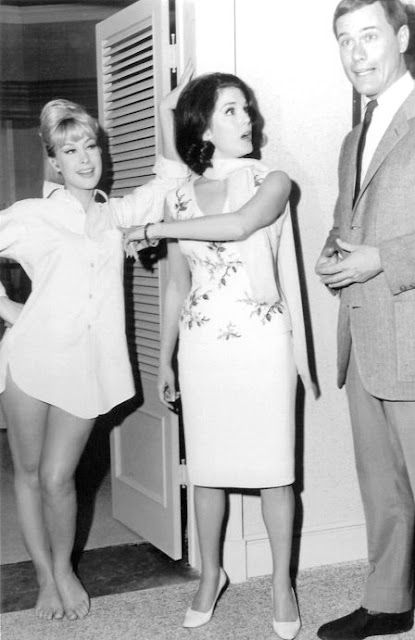
When television became the new hot medium, he decided to try his hand in it. "I suppose I needed money," he remembered. "I met Patty Duke one day at lunch. So I produced The Patty Duke Show, and I did something nobody else in TV ever did. For seven years, I wrote almost every single episode of the series."[1] He also wrote for the series Hart to Hart and Nancy. Most famously he wrote the series I Dream of Jeannie, which he also created and produced, which lasted for five seasons from 1965–1970. It was "During the last year of I Dream of Jeannie, I decided to try a novel," he said in 1982. "Each morning from 9 until noon, I had a secretary at the studio take all calls. I mean every single call. I wrote each morning - or rather, dictated - and then I faced the TV business."[1]
In 1969, Sheldon wrote his first novel, The Naked Face, which earned him a nomination for the Edgar Allan Poe Award from the Mystery Writers of America in the category of Best First Novel.
His next novel, The Other Side of Midnight, went to #1 on The New York Times bestseller list as did several ensuing novels, a number of which were also made into motion pictures or TV miniseries.
His novels often featured determined women who persevere in a tough world run by hostile men.[1] The novels contained a lot of suspense and devices to keep the reader turning the page:[1]
"I try to write my books so the reader can't put them down," he explained in a 1982 interview. "I try to construct them so when the reader gets to the end of a chapter, he or she has to read just one more chapter. It's the technique of the old Saturday afternoon serial: leave the guy hanging on the edge of the cliff at the end of the chapter."
Most of his readers were women.[1] Asked why this was the case he said: "I like to write about women who are talented and capable, but most important, retain their femininity. Women have tremendous power - their femininity, because men can't do without it."[1] Books were Sheldon's favorite medium. "I love writing books," he commented. "Movies are a collaborative medium, and everyone is second-guessing you. When you do a novel you're on your own. It's a freedom that doesn't exist in any other medium."[1]
Sheldon created, produced and wrote I Dream of Jeannie in his co-production capacity with Screen Gems. He wrote all but two dozen scripts in five years, sometimes using three pseudonyms {"Mark Rowane", "Allan Devon", "Christopher Golato"}, while simultaneously writing scripts for "The Patty Duke Show". He also used the same pseudonyms in writing all seventeen episodes of Nancy. Sheldon did this because, as he later admitted, he felt his name was appearing too often in the credits as creator, producer, copyright owner and writer of his TV series.
Sheldon was married for 30 years to Jorja Curtright Sheldon, a stage and film actress who later became an accomplished and well known interior designer. She died of a heart attack in 1985. He then remarried Alexandra Kostoff, a former child actress and advertising executive of Macedonian origin,[3] in Las Vegas in 1989. His daughter, Mary Sheldon, became a novelist in her own right.
He struggled with bipolar disorder for years; he contemplated suicide at 17 (talked out of it by his father, who discovered him), as detailed in his autobiography published in 2005, The Other Side of Me.
Sheldon died from complications arising from pneumonia at Eisenhower Medical Center in Rancho Mirage, California.[2][4]
He was cremated. His ashes were interred in Westwood Village Memorial Park Cemetery.
Awards
Sheldon won an Academy Award for Writing Original Screenplay (1947) for The Bachelor and the Bobby-Soxer, a Tony Award (1959) for his musical Redhead, and was nominated for an Emmy Award for his work on I Dream of Jeannie, an NBC sitcom.
Bibliography
Novels
The Naked Face (1970)
The Other Side of Midnight (1973)
A Stranger in the Mirror (1976)
Bloodline (1977)
Rage of Angels (1980)
Master of the Game (1982)
If Tomorrow Comes (1985)
Windmills of the Gods (1987)
The Sands of Time (1988)
Memories of Midnight (1990)
The Doomsday Conspiracy (1991)
The Stars Shine Down (1992)
Nothing Lasts Forever (1994)
Morning, Noon and Night (1995)
The Best Laid Plans (1997)
Tell Me Your Dreams (1998)
The Sky Is Falling (2001)
Are You Afraid of the Dark? (2004)
Autobiography
The Other Side of Me (2005)
Broadway Plays
The Merry Widow
Alice in Arms
Redhead
Roman Candle
Gomes(London)
Films
The Bachelor and the Bobby-Soxer
Three Guys Named Mike
Annie Get Your Gun
Dream Wife
You're Never Too Young
Anything Goes
Billy Rose's Jumbo
Bloodline
Television
I Dream of Jeannie
If Tomorrow Comes
The Patty Duke Show
Hart to Hart
References
1.^ "Author Sidney Sheldon dies at 89", Associated Press, 30 January 2007. Archive copy.
2.^ Sidney Sheldon's biography
3.^ Sidney Sheldon
4.^ "Sidney Sheldon, Author of Steamy Novels, Dies at 89", The New York Times, 31 January 2007.
Barbara La Marr (July 28, 1896 – January 30, 1926) was an American stage and film actress, cabaret artist and screenwriter.
Early life
She was born Reatha Dale Watson to William Wallace and Rosana "Rose" Watson in Yakima, Washington. Her father was an editor for a newspaper, and her mother had a son, Henry, born in 1878, and a daughter, Violet, born in February 1881, from a previous marriage. The couple wed some time during 1884, and they had William Watson, Jr., born in June 1886 in Washington. He would later, in the 1920s, become a vaudeville comedian under the stage name of "Billy Devore." The Watsons lived in various locations during La Marr's formative years. By 1900, she was living with her parents in Portland, Oregon, with her brother William, her half-sister Violet Ross, and Violet's husband Arvel Ross. As a child, La Marr also performed in a few stage productions in Tacoma, Washington.
By 1910, La Marr was living in Fresno, California, with her parents. Some time after 1911, the family moved to Los Angeles, and later settled at 220 San Jose Street in Burbank, California. In January 1913, La Marr's half-sister, now going by the name of Violet Ake, took her then 16-year-old sister on a three-day automobile excursion with a man named C.C. Boxley. They drove up to Santa Barbara, but after a few days La Marr felt that they were not going to let her return home. Ake and Boxley finally let La Marr return to Los Angeles after they realized that there were warrants issued for their arrests accusing them of kidnapping. This episode was published in several newspapers, and La Marr even testified against her sister, but the case was eventually dropped.
La Marr's name appeared frequently in newspaper headlines during the next few years. In November 1913, she came back from Arizona and announced that she was the newly-widowed wife of a rancher named Jack Lytell, and that they were supposedly married in Mexico. As legend goes, Lytell became enamored of La Marr as he saw her one day riding in an automobile while he was out on horseback. He rode up to her car and swept her on his horse and rode off with her. They were married the next day. She also stated that she loathed the name Reatha and preferred to be called by the childhood nickname "Beth."
Career
After marrying and moving with her husband to New York City, La Marr found employment writing screenplays and her association with filmmakers led to her returning to Los Angeles and making her film debut in 1920. Over the next few years she acted frequently in films, and was widely publicised as "The Most Beautiful Girl In The World." With this, she rapidly shot to stardom.
La Marr made the successful leap from writer to actress in Douglas Fairbanks' The Nut (1921), appeared in over 30 films, wrote seven successful screenplays for United Artists and Fox studios, and danced in musical comedies on Broadway. She is also said to have filmed dancing shorts in New York City, Chicago, and in Los Angeles, with such diverse partners as Rudolph Valentino and Clifton Webb.
Among La Marr's films are The Prisoner of Zenda and Trifling Women, both 1922 releases directed by Rex Ingram.
Personal life
La Marr married for the first time at the age of 17, and was ultimately married five times. At the time of her death she was married to the actor Jack Dougherty. Some years after her death, it was revealed that she had mothered a son by a man whose name has never been released. The child, Marvin Carville La Marr, was adopted after her death by the actress ZaSu Pitts and her husband, film executive Tom Gallery. The child was renamed Don Gallery and grew up to become an actor and a sometime boyfriend of Elizabeth Taylor; he now lives in Puerto Vallarta, Mexico.
She was known as "The Girl Who Is Too Beautiful," after a Hearst newspaper feature writer, Adela Rogers St. Johns, saw a judge sending her home during the police beat in Los Angeles because she was too beautiful and young to be on her own.
La Marr said that she had been adopted by Mr. and Mrs. Watson of Yakima, Washington. Depending on her mood, La Marr claimed to be of different exotic ancestries. Some film historians, however, believe that this was a tall tale to glamorize herself, when, in fact, she was the biological child of the Watsons.
Her former dance partner, Robert Hobday (stage name Robert Carville), was named as her alleged lover by her former third husband Phil Ainsworth in his divorce suit. Hobday's sister, Virginia, had been La Marr's manager and friend, who later went on to marry Jules Roth, manager of the Hollywood Memorial Cemetery, and La Marr's former lover.
Later years and death
Although her film career flourished, she also embraced the fast-paced Hollywood nightlife, remarking in an interview that she slept no more than two hours a night.
During this time she became addicted to heroin. She died suddenly from tuberculosis and nephritis in Altadena, California and was interred in the Hollywood Forever Cemetery.
La Marr has a star on the Hollywood Walk of Fame at 1621 Vine Street.
Filmography
1920 Harriet and the Piper Tam O'Shanter Girl Credited as Barbara Deely
Alternative title: Paying the Piper
Flame of Youth Story
The Mother of His Children - Story
Credited as Barbara La Marr Deely
Rose of Nome - Story
Credited as Barbara La Marr Deely
The Little Grey Mouse - Story
The Land of Jazz - Story
Credited as Barbara La Marr Deely
1921 The Nut Claudine Dupree
Desperate Trails Lady Lou
The Three Musketeers Milady de Winter
Cinderella of the Hills Kate Gradley Credited as Barbara La Marr Deely
1922 Arabian Love Themar
Domestic Relations Mrs. Martin
The Prisoner of Zenda Antoinette de Mauban
Trifling Women Jacqueline de Séverac/Zareda
Quincy Adams Sawyer Lindy Putnam
1923 The Hero Hester Lane
The Brass Bottle The Queen
Poor Men's Wives Laura Bedford/Laura Maberne
Souls for Sale Leva Lemaire
Strangers of the Night Anna Valeska Alternative title: Ambrose Applejohn's Adventure
St. Elmo Agnes Hunt
The Eternal Struggle Camille Lenoir Alternative title: Masters of Women
The Eternal City Donna Roma
1924 Thy Name Is Woman Guerita
The Shooting of Dan McGrew Lady Known as Lou
The White Moth Mona Reid/The White Moth Writer, uncredited
Hello, 'Frisco
Sandra Sandra Waring
My Husband's Wives - Story
1925 The Heart of a Siren Isabella Echevaria Alternative title: The Heart of a Temptress
The White Monkey Fleur Forsyte
1926 The Girl from Montmartre Emilia Faneaux
Popular culture
In the 1930s, Louis B. Mayer named the actress Hedy Lamarr after Barbara La Marr, who had been one of his favorite actresses.
La Marr is referred to in the Flanagan and Allen song "Underneath the Arches" during the break when Ches Allen reads out the headlines from a 1926 newspaper.
References
1900 United States Federal Census, Portland Ward 7, Multnomah County, Oregon, June 1, 1900, Enumeration District 66, Sheet 1B.
1910 United States Federal Census, Fresno, Township 3, California, April 22, 1910.
The Duluth News Tribune, "Stolen Twice, Is Now Widow", November 17, 1913.
Oakland Tribune, "Two Are Accused Of Kidnapping Girl", January 5, 1913, Page 39.
Los Angeles Times, "Serious Charge Against Couple. Child Stealing Complaint Issued", January 5, 1913, p. 11.
Los Angeles Times, "Alleged Child Stealers Surrender Themselves.", January 7, 1913, p. 3.
Los Angeles Times, "Girl Missing: Warrants Out. Absent Maid's Father Takes Drastic Action.", January 3, 1913, p. 13.
Alan Walbridge Ladd (September 3, 1913 – January 29, 1964) was an American film actor.[1]
Early life
Ladd was born in Hot Springs, Arkansas. He was the only child of Ina Raleigh Ladd and Alan Ladd, Sr. He was of English ancestry. His father died when he was four, and his mother relocated to Oklahoma City where she married Jim Beavers, a housepainter. The family then moved again to North Hollywood, California where Ladd became a high-school swimming and diving champion and participated in high school dramatics at North Hollywood High School, graduating on February 1, 1934. He opened his own hamburger and malt shop, which he called Tiny's Patio. He worked briefly as a studio carpenter (as did his stepfather) and for a short time was part of the Universal Pictures studio school for actors. But Universal decided he was too blond and too short and dropped him.[2] Intent on acting, he found work in radio.
Career
Ladd began by appearing in dozens of films in small roles, including Citizen Kane in which he played one of the "faceless" reporters who are always shown in silhouette. He first gained some recognition with a featured role in the wartime thriller Joan of Paris, 1942.[3] For his next role, his manager, Sue Carol, found a vehicle which made Ladd's career, Graham Greene's This Gun for Hire in which he played "Raven," a hitman with a conscience. "Once Ladd had acquired an unsmiling hardness, he was transformed from an extra to a phenomenon. Ladd's calm slender ferocity make it clear that he was the first American actor to show the killer as a cold angel." - David Thomson (A Biographical Dictionary of Film, 1975) [4] Both the film and Ladd's performance played an important role in the development of the "gangster" genre: "That the old fashioned motion picture gangster with his ugly face, gaudy cars, and flashy clothes was replaced by a smoother, better looking, and better dressed bad man was largely the work of Mr. Ladd." - New York Times obituary (January 30, 1964).[4] Ladd was teamed with actress Veronica Lake in this film, and despite the fact that it was Robert Preston who played the romantic lead, the Ladd-Lake pairing captured the public's imagination, and would continue in another three films. (They appeared in a total of seven films together, but three were only guest shots in all-star musical revues.)
Ladd went on to star in many Paramount Pictures' films,[5] with a brief timeout for military service in the United States Army Air Force's First Motion Picture Unit. He appeared in Dashiell Hammett's story The Glass Key, his second pairing with Lake, and Lucky Jordan, with Helen Walker. His cool, unsmiling persona proved popular with wartime audiences, and he was quickly established as one of the top box office stars of the decade.[6]
In 1946, he starred in a trio of silver screen classics: the big screen adaptation of Richard Henry Dana's maritime classic, Two Years Before the Mast (for which he also received critical acclaim), the Raymond Chandler original mystery The Blue Dahlia (his third pairing with Lake), and the World War II espionage thriller, O.S.S.
He formed his own production companies for film and radio and then starred in his own syndicated series Box 13, which ran from 1948-49. Ladd and Robert Preston starred in the 1948 western film, Whispering Smith, which in 1961 would become a short-lived NBC television series, starring Audie Murphy.
In 1949's version of The Great Gatsby, Ladd had the featured role of Jay Gatsby.
Ladd played the title role in the 1953 western Shane. The film was nominated for five Academy Awards, including Best Picture. It was listed at No. 45 on the American Film Institute's 2007 ranking of "100 Years ... 100 Movies."
Ladd made the Top Ten Money Making Stars Poll three times: in 1947, 1953 and 1954.[2]
When former agent Albert R. Broccoli formed Warwick Films with his partner Irving Allen, they heard Ladd was unhappy with Paramount and was leaving the studio. With his wife and agent Sue Carol, they negotiated for Ladd to appear in the first three of their films made in England and released through Columbia Pictures The Red Beret/Paratrooper (1953), Hell Below Zero (based on Hammond Innes's book The White South) (1954) and The Black Knight with each co-written by Ladd's regular screenwriter Richard Maibaum. (1954)[7] In 1954 Ladd formed a new production company, Jaguar Productions, originally releasing his films through Warner Bros. and then with All the Young Men through Columbia.

In November 1962, he was found lying unconscious in a pool of blood with a bullet wound near his heart, an unsuccessful suicide attempt.[2] In 1963 Ladd filmed a supporting role in The Carpetbaggers. He would not live to see its release. On January 29, 1964 he was found dead in Palm Springs, California, of an acute overdose of "alcohol and three other drugs," at the age of 50; his death was ruled accidental.[8] He was entombed in the Forest Lawn Memorial Park Cemetery in Glendale, California. Not until June 28, 1964 did Carpetbaggers producer Joseph E. Levine hold an elaborate premiere screening in New York City with an afterparty staged by his wife at The Four Seasons Restaurant.[9]
Alan Ladd has a star on the Hollywood Walk of Fame at 1601 Vine Street.[10] His handprint appears in the forecourt of Grauman's Chinese Theater, in Hollywood.
Personal life
He had married a high-school acquaintance, Midge Harrold. Their only child, a son named Alan Ladd, Jr., was born in 1937. Ladd's stepfather died suddenly. Then his mother, who suffered from depression, committed suicide by poison.
In 1942, Ladd married his agent/manager, former movie actress Sue Carol.
Ladd owned properties in Beverly Hills and, in Palm Springs, Alan Ladd Hardware. His son by his first wife Midge Harrold, Alan Ladd, Jr., is a motion picture executive and producer and founder of The Ladd Company. His daughter actress Alana, who co-starred with her father in Guns of the Timberland and Duel of Champions, is married to the veteran talk radio broadcaster Michael Jackson. Another son, actor David Ladd, who co-starred with Ladd as a child in The Proud Rebel, married Charlie's Angels star Cheryl Ladd, 1973-1980. Actress Jordan Ladd is his granddaughter.[11]
Reports of his height vary from 5'5" to 5'9" (from his military records) (1.65 to 1.75 m), with 5'6" (1.68 m) being the most generally accepted today.[2][12]
References
1.^ Obituary Variety, February 5, 1964, page 63.
2.^ Linet, Beverly. Ladd: The Life, the Legend, the Legacy of Alan Ladd. New York: Arbor House, 1979. ISBN 0-87795-203-5
3.^ Alan Ladd 8/12
4.^ Alan Ladd
5.^ City of nets: a portrait of Hollywood in the 1940's By Otto Friedrich
6.^ Alan Ladd - Biography - MSN Movies
7.^ Broccoli, Albert R. and Zec, Donald When the Snow Melts: The Autobiography of Cubby Broccoli Trans-Atlantic Publications 1999
8.^ Alan Ladd Death Ruled Accidental UPI. The Bulletin of Bend and Central Oregon Feb 5, 1964.
9.^ Kilgallen, Dorothy (June 30, 1964). "Voice of Broadway". New York Journal American. p. 25. 10.^ Alan Ladd, Awards 11.^ MSN - Movies: Jordan Ladd 12.^ Shipman, David. The Great Movie Stars: The Golden Years. New York: Hill and Wang, 1979. ISBN 0-8090-5170-2
Freddie Prinze (June 22, 1954 – January 29, 1977) was an American actor and stand-up comedian. He was best known as the star of Chico and the Man. He was the father of actor Freddie Prinze, Jr.
Early life
Prinze was born Frederick Karl Pruetzel at St. Clair's Hospital in New York City, the son of Maria Graniela Pruetzel and Edward Karl Pruetzel. His mother was Puerto Rican, and his father, a Hungarian of Lutheran and Jewish backgrounds, immigrated to the U.S. from Germany in 1934. He identified himself as Puerto Rican, and for comedic purposes called himself a "Hungarican."[1][2][3][4]
Prinze was raised in a predominately Hispanic neighborhood in Washington Heights, New York City.[5] He began his education at a private Lutheran school, in a religious compromise by his parents (his mother took him to Catholic mass on Sundays). When Prinze was a small child, his mother enrolled him in ballet classes to deal with his weight problem. Without telling his parents, Prinze successfully auditioned for the Fiorello H. LaGuardia High School of Performing Arts, where he was introduced to drama and continued ballet—and where he discovered his gift for comedy while entertaining crowds in the boys restroom. He was also a small time hustler and drug dealer in his neighborhood of 157th Street and Broadway. He dropped out of school in his senior year to become a stand-up comedian.
Career
Prinze worked at several comedy clubs in New York City, including The Improv and Catch a Rising Star where he introduced himself to audiences as a "Hungarican" (part Hungarian, part Puerto Rican). For the sake of his budding comedic career, he changed his surname to "Prinze," which he chose because, according to his friend David Brenner, he originally wanted to be known as the King of comedy, but Alan King already had that last name, so he would be the Prince of comedy instead.
During 1973, he made his first television appearance on one of the last episodes of The Jack Paar Show. In December 1973, his biggest break came with an appearance on The Tonight Show Starring Johnny Carson. Prinze was the first young comedian to be asked to have a sit-down chat with Carson on his first appearance. (Prinze appeared on and guest hosted The Tonight Show on several other occasions). He also appeared on the Midnight Special show to perform his comic routine. From 1974 to 1977, Prinze starred as Francisco "Chico" Rodriguez in the NBC TV series Chico and the Man with Jack Albertson. The show was an instant hit.
Prinze made several appearances on the Dean Martin Celebrity Roasts, most notably at the roasts for Sammy Davis Jr. and Muhammad Ali. In 1975, he released a comedy album that was taped live at Mr. Kelly's in Chicago titled Looking Good—his catch phrase from Chico and the Man. In 1976, he starred in a made-for-TV movie, The Million Dollar Rip-Off.
Prinze had a little-known talent for singing, examples of which could be heard in the background of the title song of the Tony Orlando and Dawn album To Be With You, in his appearances on their variety show, and on rare occasions on his own sitcom.
About four months prior to his death, Prinze had signed a multi-year deal with NBC worth $6 million over five years. In the months before he died, he had a strong fixation on how John F. Kennedy was assassinated. He also developed an obsession with the film Taxi Driver, viewing it repeatedly.
Upon becoming wealthy, Prinze took martial arts lessons from Robert Wall, a student of Bruce Lee who appeared in Enter the Dragon and Return of the Dragon. Soon after, Wall became godfather to Prinze's newborn son Freddie Prinze, Jr.
Personal life
Prinze married Katherine Cochran in October 1975, with whom he had one son, future actor Freddie Prinze, Jr. In 1976, after his arrest for driving under the influence of quaaludes, his wife filed for divorce on the grounds that his escalating drug dependence was endangering her and their son.
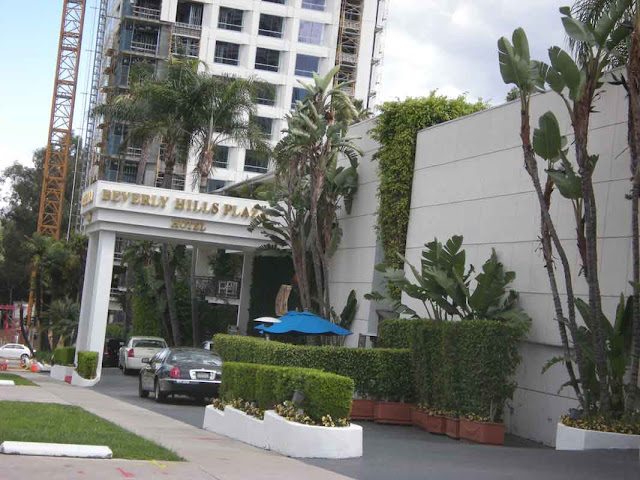

 Death
During the early morning hours of January 28, 1977, after receiving a restraining order from his ex-wife the previous evening, Prinze, who occasionally told friends that "life isn't worth living," made a series of farewell phone calls to family, friends and management from his hotel room at the Beverly Comstock Hotel (above, renamed Beverly Hills Plaza Hotel). His business manager, Marvin "Dusty" Snyder, was alarmed after receiving one of the calls and rushed over to Prinze's room. When Snyder arrived, Prinze continued his rueful phone calls, telling his mother "Mom, I love you very much, but I can't go on. I need to find peace." Snyder called Prinze's psychologist from the next room about what was happening, but the psychologist insisted that Prinze was in no actual danger. Snyder returned to Prinze, who supposedly called his ex-wife and said "I love you, Kathy. I love the baby, but I need to find peace. I can't go on."
After the call, Prinze pulled out a gun from the sofa. Snyder tried to intervene, but Prinze shot himself in the head,[6] and was rushed to the UCLA Medical Center to be placed on life support following emergency surgery. Prinze's family removed him from life support, and he died at 1:00 pm on January 29. He was 22 years of age.
In 1977, the death was ruled a suicide. In a civil case brought years later, a jury found that his death was accidental.[7] Prinze had a history of playing with guns, faking suicide attempts to frighten his friends for his amusement.[8] He had left a note stating that the decision to take his life was his alone, but because he pulled the trigger in the presence of a witness —it gave enough weight to the argument that he really was not planning to take his own life that night.[9]
Freddie Prinze is entombed at Forest Lawn Cemetery, Hollywood Hills in the Court of Remembrance, Sanctuary of Light.
Prinze's mother wrote a book about her son, The Freddie Prinze Story, which was published in 1978. In September 1979, the TV movie Can You Hear the Laughter? The Story of Freddie Prinze premiered.
Freddie Prinze was a focal point of one of the storylines in the movie Fame set in Prinze's alma mater Fiorello H. LaGuardia High School of Music and Art and Performing Arts. The character of Ralph Garcy (stage name for Raul Garcia) played by Barry Miller speaks often of growing up with Prinze and seeing him as the local neighborhood hero. Prinze's death affects him profoundly, and Garcy credits the event with inspiring his own career. He says he is doing it "for Freddie." Later, Garcy's stand-up career shows similar promise, followed by depression, drugs, and ultimately near self-destruction. The character of Doris Finsecker (Maureen Teefy) in one scene screams at Garcy, saying he is not Freddie, and he does not have to do (self-destructive behaviors) just because Freddie did them.
Prinze also received a star on the Hollywood Walk Of Fame a few decades after his death. In 2001, TV Land began showing reruns of Chico and the Man.
References
1.^ Nordheimer, Jon (1977-01-29). "Freddie Prinze". The New York Times.
2.^ Maeder, Jay (1999-06-09). "FREDDIE PRINZE EVERYTHING IN THE WORLD". New York Daily News.
3.^ "Freddie Prinze". The Fresno Bee Republican. 1975-07-25.
4.^ Lester, David (1993). Understanding Suicide: A Case Study Approach. Michigan: Nova Science Publishers. pp. 103. ISBN 1560721499.
5.^ Nordheimer, Jon. "Freddie Prinze Wounded in Head; Police Say TV Star Shot Himself; PRINZE, THE TV STAR, IS WOUNDED IN HEAD", The New York Times, January 29, 1977. Accessed June 11, 2008.
6.^ "Freddie Prinze: Too Much, Too Soon". Time Magazine. February 7, 1977.
7.^ The Show Must Go on: How the Deaths of Lead Actors Have Affected Television By Douglas Snauffer, Joel Thurm. Mcfarland press. p. 74.
8.^ http://www.ew.com/ew/article/0,,295817,00.html
9.^ http://www.museum.tv/eotvsection.php?entrycode=prinzefredd
Death
During the early morning hours of January 28, 1977, after receiving a restraining order from his ex-wife the previous evening, Prinze, who occasionally told friends that "life isn't worth living," made a series of farewell phone calls to family, friends and management from his hotel room at the Beverly Comstock Hotel (above, renamed Beverly Hills Plaza Hotel). His business manager, Marvin "Dusty" Snyder, was alarmed after receiving one of the calls and rushed over to Prinze's room. When Snyder arrived, Prinze continued his rueful phone calls, telling his mother "Mom, I love you very much, but I can't go on. I need to find peace." Snyder called Prinze's psychologist from the next room about what was happening, but the psychologist insisted that Prinze was in no actual danger. Snyder returned to Prinze, who supposedly called his ex-wife and said "I love you, Kathy. I love the baby, but I need to find peace. I can't go on."
After the call, Prinze pulled out a gun from the sofa. Snyder tried to intervene, but Prinze shot himself in the head,[6] and was rushed to the UCLA Medical Center to be placed on life support following emergency surgery. Prinze's family removed him from life support, and he died at 1:00 pm on January 29. He was 22 years of age.
In 1977, the death was ruled a suicide. In a civil case brought years later, a jury found that his death was accidental.[7] Prinze had a history of playing with guns, faking suicide attempts to frighten his friends for his amusement.[8] He had left a note stating that the decision to take his life was his alone, but because he pulled the trigger in the presence of a witness —it gave enough weight to the argument that he really was not planning to take his own life that night.[9]
Freddie Prinze is entombed at Forest Lawn Cemetery, Hollywood Hills in the Court of Remembrance, Sanctuary of Light.
Prinze's mother wrote a book about her son, The Freddie Prinze Story, which was published in 1978. In September 1979, the TV movie Can You Hear the Laughter? The Story of Freddie Prinze premiered.
Freddie Prinze was a focal point of one of the storylines in the movie Fame set in Prinze's alma mater Fiorello H. LaGuardia High School of Music and Art and Performing Arts. The character of Ralph Garcy (stage name for Raul Garcia) played by Barry Miller speaks often of growing up with Prinze and seeing him as the local neighborhood hero. Prinze's death affects him profoundly, and Garcy credits the event with inspiring his own career. He says he is doing it "for Freddie." Later, Garcy's stand-up career shows similar promise, followed by depression, drugs, and ultimately near self-destruction. The character of Doris Finsecker (Maureen Teefy) in one scene screams at Garcy, saying he is not Freddie, and he does not have to do (self-destructive behaviors) just because Freddie did them.
Prinze also received a star on the Hollywood Walk Of Fame a few decades after his death. In 2001, TV Land began showing reruns of Chico and the Man.
References
1.^ Nordheimer, Jon (1977-01-29). "Freddie Prinze". The New York Times.
2.^ Maeder, Jay (1999-06-09). "FREDDIE PRINZE EVERYTHING IN THE WORLD". New York Daily News.
3.^ "Freddie Prinze". The Fresno Bee Republican. 1975-07-25.
4.^ Lester, David (1993). Understanding Suicide: A Case Study Approach. Michigan: Nova Science Publishers. pp. 103. ISBN 1560721499.
5.^ Nordheimer, Jon. "Freddie Prinze Wounded in Head; Police Say TV Star Shot Himself; PRINZE, THE TV STAR, IS WOUNDED IN HEAD", The New York Times, January 29, 1977. Accessed June 11, 2008.
6.^ "Freddie Prinze: Too Much, Too Soon". Time Magazine. February 7, 1977.
7.^ The Show Must Go on: How the Deaths of Lead Actors Have Affected Television By Douglas Snauffer, Joel Thurm. Mcfarland press. p. 74.
8.^ http://www.ew.com/ew/article/0,,295817,00.html
9.^ http://www.museum.tv/eotvsection.php?entrycode=prinzefredd
James Francis "Jimmy" Durante (February 10, 1893 – January 29, 1980) was an American singer, pianist, comedian and actor. His distinctive clipped gravelly speech, comic language butchery, jazz-influenced songs, and large nose helped make him one of America's most familiar and popular personalities of the 1920s through the 1970s. His jokes about his nose included referring to it as a "Schnozzola," and the word became his nickname.
Durante suffered a stroke in 1972, and used a wheelchair during the last years of his life. He died of pneumonia in Santa Monica, California, on January 29, 1980 and was interred at Holy Cross Cemetery, Culver City.

.jpg)

.jpg)
.JPG)
.JPG)
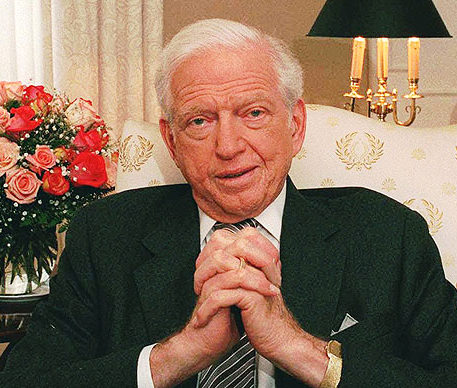



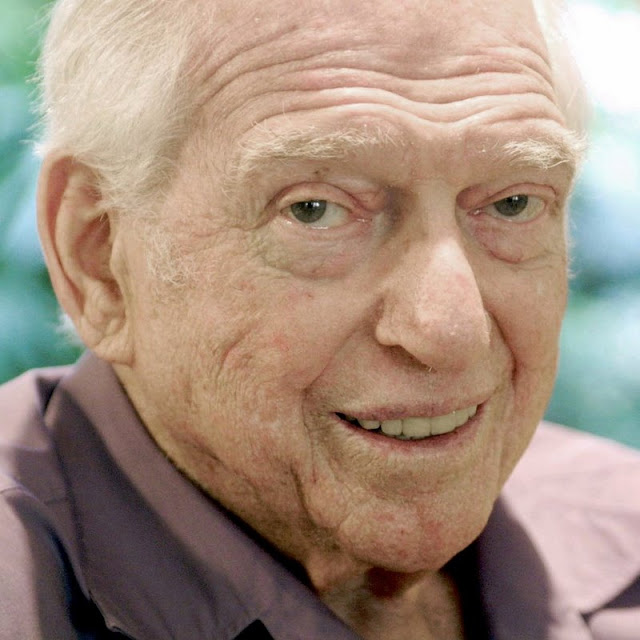
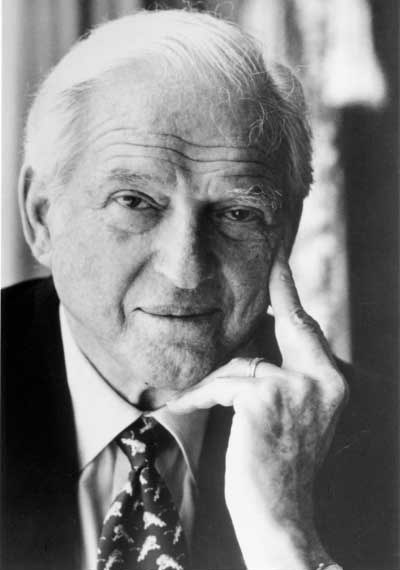
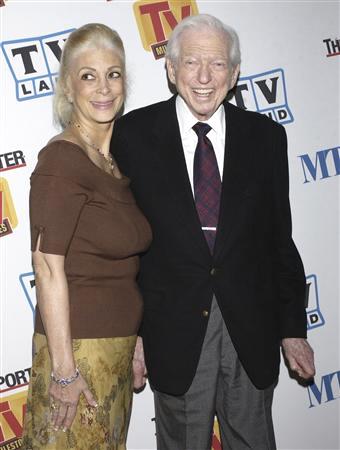
.JPG)
.JPG)
.JPG)


.JPG)
.JPG)
.JPG)



